DENVER — After working as a paramedic in Colorado for nine years, Mike Kobneck knew that something had to change.
“I got frustrated one day because the charting program we were using was terrible,” Kobneck admitted. “It was super inefficient, and when you’re running as many calls as we were, you don’t have time for inefficiencies with your charting.”
Possessed of an entrepreneurial spirit, Mike had already considered a variety of innovations to improve the speed, responsiveness, and precision of EMS, including a hydraulic stretcher that could help EMTs and paramedics lift their patients onto the back of an ambulance.
“So I turned to a friend of mine, Kevin Scardina, who I knew had some experience with software development, and I said, ‘What do you think if we spoke into a little microphone and plugged that into a computer with voice recognition?”
Also a paramedic in the Denver area, Scardina had spent the 90s as a software developer in Silicon Valley, where he had worked with a variety of tech companies before the Dotcom Collapse in the early 2000s.
Observing that Kobneck was serious about wanting to improve the charting program, Scardina agreed to sit down with him and see what could be done.
Bringing EMS into the Present
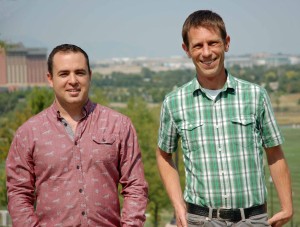
Former paramedics turned tech entrepreneurs Mike Kobneck (left) and Kevin Scardina are intent on enhancing EMS through digital health technology.
Realizing that there was a real need to create innovative tech solutions for EMS providers, the two paramedics formed Novum Concepts in March of 2014.
“It took us a few months to really get our bearings,” Kobneck admitted. After examining the charting software and identifying its major inefficiencies, the Novum Concepts team began to design a more effective program.
“One of the features that I wanted to put into the new program was based on the FaceTime concept,” Kobneck explained, describing the process that led to the creation of Biophone, his company’s signature product. “If I could FaceTime a drunk person who didn’t want to go to the hospital, then the doctor would be able to see exactly what was going on and talk to them.”
When asked why EMS personnel couldn’t just use FaceTime to communicate with ER doctors, Kobneck replied that FaceTime wasn’t HIPAA compliant. “A major challenge that we faced in developing Biophone was HIPAA compliancy. We had to build 64 different modules just to make the app compliant.”
Scardina and Kobneck created Biophone while serving as paramedics in the Denver Metro Area. “We were working four ten-hour shifts a week. And in those four ten-hour shifts, we would run anywhere from eight to fourteen calls per day. That’s a pretty busy day.”
According to Kobneck, developing Biophone during their off-hours allowed the Novum Concepts team to create an app ideally suited to the needs of both EMTs and paramedics.
“It really forced us to make this the most efficient and effective app in the field.”
Breaking the Registration Bottleneck
The Biophone app is presently being piloted at Good Samaritan Medical Center in Lafayette, Colorado, to assess its ability to reduce delays in care by making patient pre-registration possible.
“Currently there’s a phone call that lasts from thirty seconds to two minutes between EMS personnel and the ER. The paramedic gives the ER basic information about the patient. But they can’t give the patient’s name and date of birth, because that’s too time-consuming.”
According to Kobneck, the demands of patient care and transport leave the necessary work of registration to wait until the ambulance arrives at the ER. Once in the hospital, patient registration can take anywhere from five to ten minutes, creating a potential delay in care.
Biophone aims to reduce this delay by making patient pre-registration possible. Using the app, an EMS responder takes a photo of the patient’s driver’s license, and then selects the patient’s ailment, their acuity level, and the time it will take the ambulance to get to the emergency room.
Biophone sends this information to an iPad in the ER, where an EMS liaison can take the patient’s information and enter it into the system. This easy fix transforms the registration process from a ten-minute ordeal, into the quick attaching of a bracelet to the patient’s wrist when they arrive at the hospital.
Simple Tech with a Profound Effect
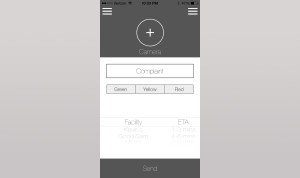
This screenshot displays Biophone’s capability to relay photos and videos, provide information about a patient’s ailment and acuity rating, and inform the ER of the ambulance’s ETA.
In Kobneck’s opinion, Biophone’s ability to empower paramedics to send photo and video information from the field can virtually connect the ER to the scene of an emergency.
“In the situation of a rollover, the paramedic can take a picture of the car, the steering wheel, and the patient whose ribs were just crushed by that steering wheel,” Kobneck explained.
“The patient will benefit from this because they’ll have a thoracic surgeon waiting for them at the hospital. The paramedic will benefit because they’ll be able to take a picture, instead of spending time on the phone trying to explain what happened. And the hospital will benefit because they’ll be able to prepare much more efficiently.”
Biophone also lets EMTs and paramedics follow up with their patients after hospital admission by allowing EMS personnel to send a request for information to the EMS liaison. “This helps build the sense of community that hospitals are trying to achieve these days.”
Kobneck and Scardina plan to complete Biophone’s HL7 integration within the next month, which will allow hospital personnel to add images and videos from the app to a patient’s EHR. “Oftentimes complex scene information is left out of a patient’s record or convoluted and minimized. This will prevent that.”
According to Kobneck, training EMS personnel to use Biophone is a simple affair that generally takes no longer than a minute.
Building the Ambulance of the Future
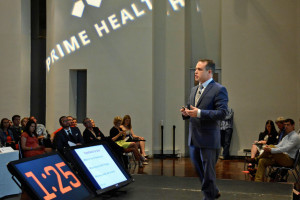
“We give the ER the ability to accurately prepare for each individual patient,” Kobneck told his audience at the 2015 Digital Health Challenge.
“Biophone is a starting point for us,” Kobneck admitted, before revealing his plans to expand the Novum Concepts product line. “In the next six months or so we’re going to begin development of the charting program.”
He and Scardina plan to integrate Biophone into the new charting software, which Kobneck said would be available in early 2017. Once the charting program is finished, Novum Concepts will then focus on creating lightweight medical devices meant to enhance the capabilities of EMS personnel. “Altogether I think we have about ten years worth of plans.”
After being asked about the future of EMS, Kobneck animatedly described what he called “the auto-EMT.”
“I envision that a paramedic will be able to use an iPad that’s charting everything, sending everything to the hospital, and controlling the automatic compression machine and IV pumps. The paramedic will be able to sit there and tell the iPad to ventilate the patient at fifteen respirations a minute, perform a hundred compressions, and even push an epi if that’s what the patient needs.”
In his vision of the ambulance of the future, Kobneck foresees EMTs and paramedics using highly advanced medical devices to direct patient care and gather medical information. “This will help you avoid dosage errors and other issues that pop up when EMS personnel are in high-stress situations.”
Allowing EMS to Focus on Delivery of Care
“Kevin and I became paramedics because we wanted to help people,” Kobneck said as he described the mission of Novum Concepts. “We feel that if we can improve the way patients are cared for, and streamline the delivery of that care, then we can make what’s a really tough job that much easier.”
With the Biophone app, it’s apparent that Scardina and Kobneck have taken an important step in strengthening the connection between EMS personnel and the hospitals they serve. By drawing EMTs and paramedics further into the increasingly integrated network of care being created by digital health technology, Novum Concepts is helping EMS personnel improve the speed, responsiveness, and precision of the medical attention they provide.
Like the coverage that CyberMed News provides? Follow us on Twitter, LinkedIn, and Facebook to make sure you keep up to date on the most recent developments in Colorado’s digital health community.

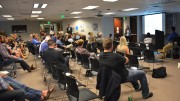


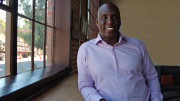
Be the first to comment on "The App that Connects You to the ER the Moment the Ambulance Arrives"